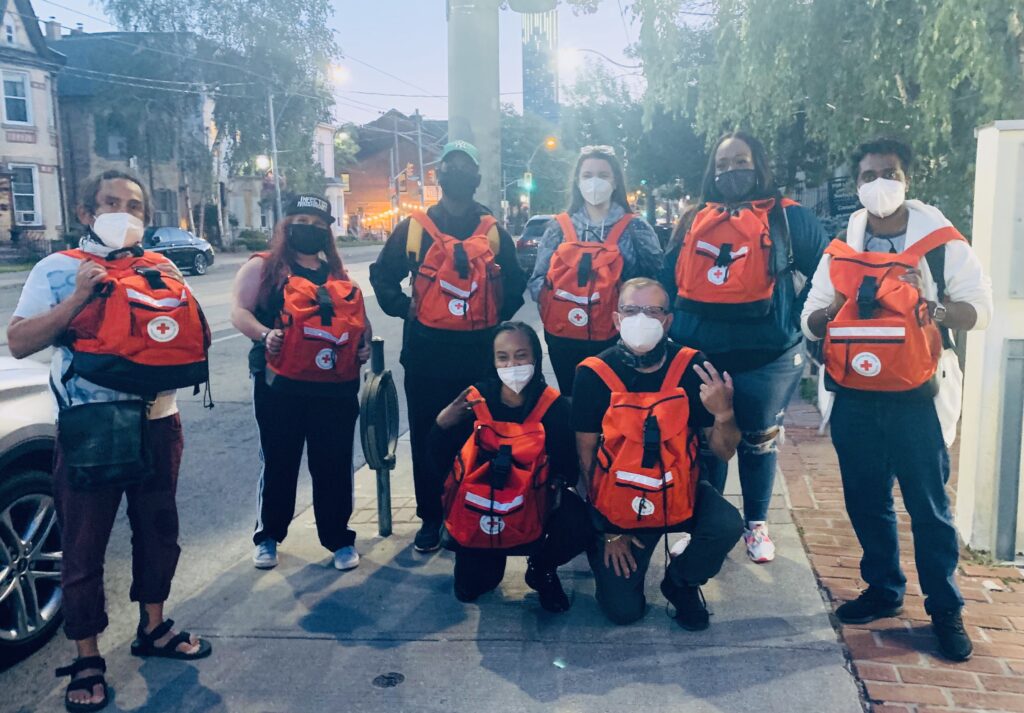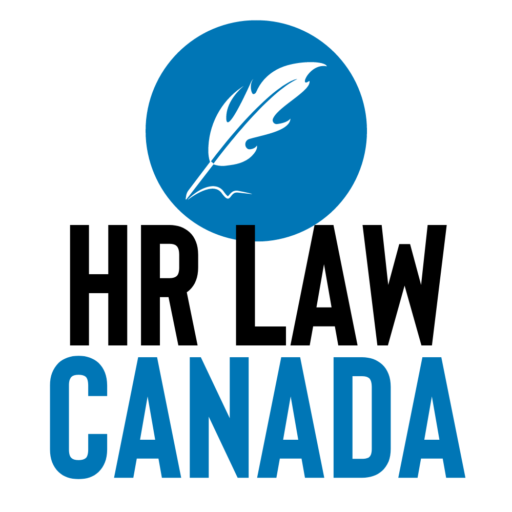By Heart to Heart First Aid CPR Services
As of June 1, 2023, the Occupational Health and Safety Act (OHSA) will require workplaces to have a naloxone kit if an employer becomes aware, or ought reasonably to be aware, of the following scenarios:
In 2021, 2819 people died from opioid-related causes in Ontario – the highest number on record. This is mostly due to the unregulated toxic drug supply (street drugs) that are illegally manufactured and contain deadly and potent opioids like fentanyl or carfentanil. Opioid poisoning is a condition that depresses the person’s central nervous system and often causes respiratory failure and accidental death from a lack of oxygen. Most deaths occur when the person is “using” alone at home.
Naloxone is a life-saving medication that can temporarily reverse opioid poisoning and restore breathing within minutes. It can be administered nasally or by intramuscular injection.

Of the Ontario workers who died from opioid-related causes last year, 30% were employed in construction – by far the most impacted industry. Bars and nightclubs have also seen increased opioid usage and accidental opioid poisoning.
“Ontario, like the rest of Canada, is in the middle of an opioid epidemic made worse by a toxic supply of recreational street drugs,” said Honourable Monte McNaughton, Minister of Labour, Immigration, Training and Skills Development (MLITSD). “That’s why our government is the first in North America to require naloxone kits to be accessible in at-risk workplaces, to raise awareness for those struggling with addiction, reduce stigma and save lives.”
Ontario’s Chief Prevention Officer, Dr. Joel Moody said, “Through the Workplace Naloxone Program, we are committed to supporting employers with the costs associated with training and kits, and supporting workers with access to high-quality training that will equip them to safely respond to an opioid overdose.”
For up to two years, Ontario will provide one free nasal spray naloxone kit per workplace and free naloxone training for up to two workers per workplace.
Employers can visit the following participating program providers for more information on how to access free naloxone training and kits:
Employers are not required to use a specific training provider to comply with the training requirements. An employer could either provide the training itself or use an external training provider.

If an employer is required to provide a naloxone kit in the workplace, they must determine how to ensure there is a worker present who has been trained and works in the vicinity of the naloxone kit. Training requirements must include how to recognize opioid poisoning, how to administer naloxone, and being acquainted with any hazards related to the administration of naloxone .
Quick Facts:
- The employer must ensure that the administration of naloxone by workers is done safely.
- Employers/workers should call 911 immediately if a worker falls unconscious in the workplace.
- Oftentimes naloxone alone is not enough to assist a worker who is unconscious and experiencing opioid poisoning in the workplace.
- If the worker with naloxone training is not trained in first aid and CPR, as a best practice, they should be accompanied by someone who is trained and certified in either Emergency First Aid CPR/AED or Standard First Aid CPR/AED when responding to a suspected opioid poisoning. The level of first aid training and first aid supplies is dependent on the workplace’s first aid requirements as per Regulation 1101 by Workplace Safety Insurance Board (WSIB). Having additional first aid training and protective equipment will only enhance opioid poisoning response. It can also help to ensure that first aid and/or CPR/AED is administered in the event the person is unconscious and not breathing.
- The person given naloxone may experience acute opioid withdrawal, which can cause pain, distress and agitation. Opioid withdrawal symptoms can include aggressive behaviour and workers should be trained on how to respond to a potentially violent person.
- Workers should also be trained on how to protect themselves from biological exposure because opioid withdrawal symptoms can include nausea, vomiting and diarrhea. They may also be exposed to toxic chemicals and sharps.
- The OHSA requirements on naloxone do NOT apply to workplaces where the risk of an opioid overdose is only created by a non-worker, such as a customer, client, patient or other member of the public.
- Disclosure of personal information – Employers are not permitted to disclose more personal information than is reasonably necessary to comply with the naloxone requirements. For example, the worker in charge of the naloxone kit could be told by the employer that there is a risk of a worker having an opioid overdose in the workplace. However, the worker in charge of the naloxone kit would not necessarily need to know all the personal information about the worker who is at risk of having an opioid overdose.
- The OHSA requirements on naloxone don’t require employers to ask about a worker’s opioid use.
Heart to Heart First Aid CPR Services Inc. has been advocating for naloxone and enhanced overdose response training in high-risk workplaces since October 2020. “We are elated that the government of Ontario has implemented harm reduction within the Occupational Health and Safety Act”, said Nick Rondinelli, CEO and Owner of Heart to Heart CPR. “This is a monumental, evolutionary, and major step in the right direction.”
On May 19th, 2021, Nick provided a report to the Ontario Ministry of Labour, Immigration, Training and Skills Development (MLITSD) and identified gaps within workplace training and the Occupational Health and Safety Act (OHSA) which did not provide proper protections for workers who are most likely to witness or experience opioid poisoning.
In June 2021, Nick collaborated with people who use drugs (PWUD), peers and front-line workers to establish a free self-funded and social-justice based life-saving course called Peer Support Responder. The program provides free training and supplies to people most at risk of witnessing or experiencing opioid poisoning. The course was created as an urgent response to the horrifying spike in opioid-related deaths during the COVID-19 pandemic. As of today, Nick and his team has trained and equipped over 250 high-risk community members and frontline workers across Ontario.
During this time, the MLITSD began observing Nick and the Peer Support Responder training through social media, and later acknowledged his leadership in offering enhanced opioid-poisoning training and supplies directly to the community most impacted by the dual COVID-19 and opioid poisoning crises.
In January 2022, the MLITSD took a bold step forward and proposed changes to OHSA for the inclusion of naloxone in Ontario workplaces most at risk. Immediately following this announcement, Nick took part in the public consultation and encouraged his network of over 250 trained peer support responders to do the same. A few months later, MLITSD engaged Nick to provide expert consultation regarding the implementation of naloxone distribution and overdose response training to workers within workplaces in Ontario.
On December 14, 2022, after an anticipated wait, MLITSD released the details of the new legislation and roll-out of Ontario’s Workplace Naloxone Program. “Upon reviewing and reading the actual law, I think there are many great things about it. I feel it’s a great start. I really do applaud Minister Monte McNaughton, his Chief of Staff, Joshua Workman, Ontario’s Chief Prevention Officer, Dr. Joel Moody, former Chief Prevention Officer, Ron Kelusky and their extraordinary team at the MLITSD’s Training and Awareness Branch,” said Rondinelli. “They listened and acted quickly. They put the safety of Ontario workers first and this is exactly what a great government does!”
“I am very pleased that some of our recommendations were adopted and I am hopeful that the government will adopt more of my recommendations in the near future. This is especially true in regards to broadening the definition of “high risk” workplaces, in the context of the new OHSA requirements, to include workers who are likely to provide opioid poisoning response to non-workers, such as a customer, client, patient or other member of the public. I would like to see OHSA expand its protections for all workers who are called to act, regardless of who is experiencing opioid poisoning. Currently, for the OHSA requirements on naloxone to apply, the risk of an opioid overdose must be from a worker employed by the workplace.”
“Workers providing overdose responses to non-workers are happening everyday in places like coffee shop bathrooms, public libraries, and businesses that are located in or around areas with high rates of opioid poisoning,” said Nick Rondinelli, CEO/Owner of Heart to Heart CPR.
“These workers are often left traumatized and unprotected. This can also be said for frontline workers in security, shelter support, harm reduction, outreach, supportive and community housing, and more.”
”The stress and anxiety they have going to work everyday takes a toll on their mental health. They are often marginalized workers servicing marginalized people with low paying jobs.”
“If a workplace is not eligible for the Workplace Naloxone Program, I strongly recommend that all workplaces where workers are likely to perform opioid poisoning response, pick up a naloxone kit from a local pharmacy or community health centre. I encourage employers to do a thorough risk assessment and provide their staff with group first aid training with an additional training module in opioid poisoning response. They should also acquire appropriate protective supplies to keep workers safe and conduct regular and frequent training.
“Employers should advocate for their workers to manage risk confidently and feel prepared in the event they encounter someone experiencing opioid poisoning or any other medical emergency. One thing I learned about teaching high-risk community members and workers is they want to feel empowered and prepared. They want to go to work like everyone else and feel safe and equipped to do their jobs properly. Above all, they want to help a person in their time of need. Feeling hopeless, helpless and unprepared at work is not what we stand for as workers in Ontario,” said Rondinelli.
Some other constructive feedback by Nick Rondinelli, CEO/Owner of Heart to Heart CPR:
- As we begin to embrace harm reduction, mental health, addictions and recovery in occupational health and safety, it is important that we create an atmosphere for workers who are struggling with substance use disorder to feel comfortable and ask their employers for help and support.
- Occupational health and safety laws and workplace mental health advocacy can be a catalyst for removing stigma and shame associated with substance use. Understanding the harmful effects of stigma can reshape how we see and treat people who use drugs. Removing stigma allows people to seek recovery and rehabilitation easier and without barriers.
- We must protect the privacy rights of workers who use drugs and discourage policies and procedures that may single out workers and create an atmosphere of judgment and fear. Disclosure should be the absolute right of the worker when they are ready.
- Employers, managers and supervisors must lead with compassion and create support systems and resources for workers who are seeking recovery to get the help and support they need.
- Awareness on substance use disorders among workers in the skilled trades is key in the prevention of new workers entering the skilled trades to develop substance use disorder. This is especially true among the younger generations.
- At-risk workplaces should be encouraged by the government to create more initiatives, programs and educational resources to discourage workers from using opioids alone at home and unmonitored. Creating clever ways to avert accidental death is key. Understanding that most opioid related deaths are not occuring at work-sites, but rather at home, can help avert accidental death significantly.
To conclude, not all employers have to comply with the OHSA requirements to provide naloxone in the workplace. Employers should conduct their own inquiries into the risk of opioid poisoning in the workplace, consult the OHSA and its regulations and apply the law to the circumstances in their workplace. They may wish to consult a lawyer if they have questions.






